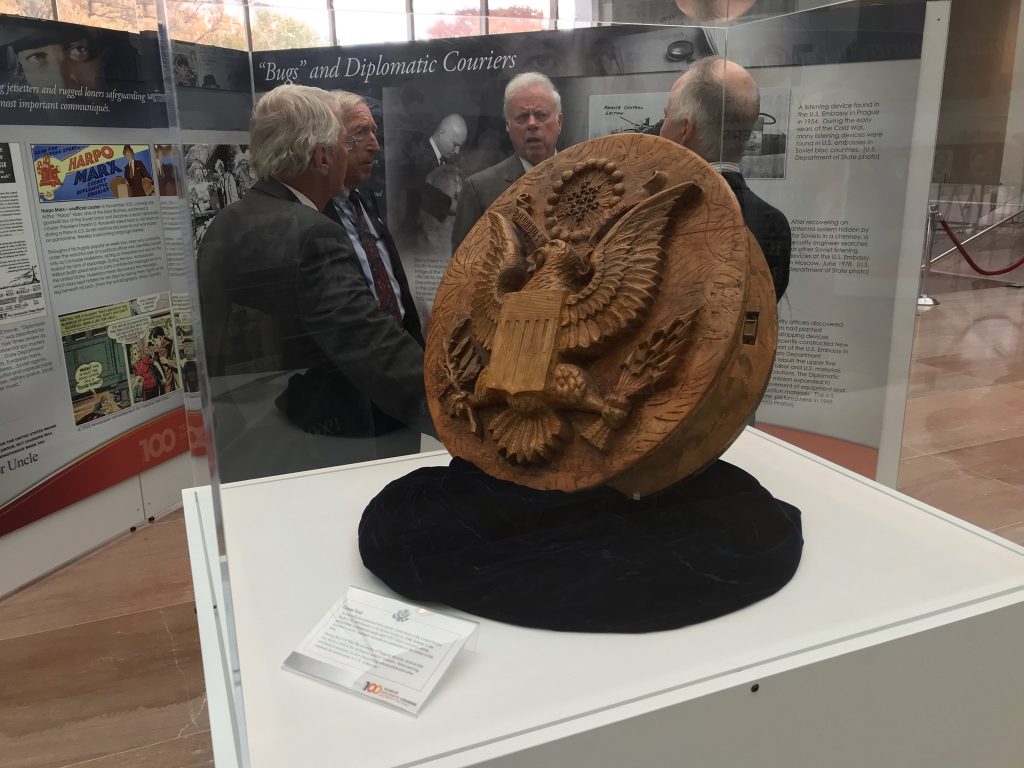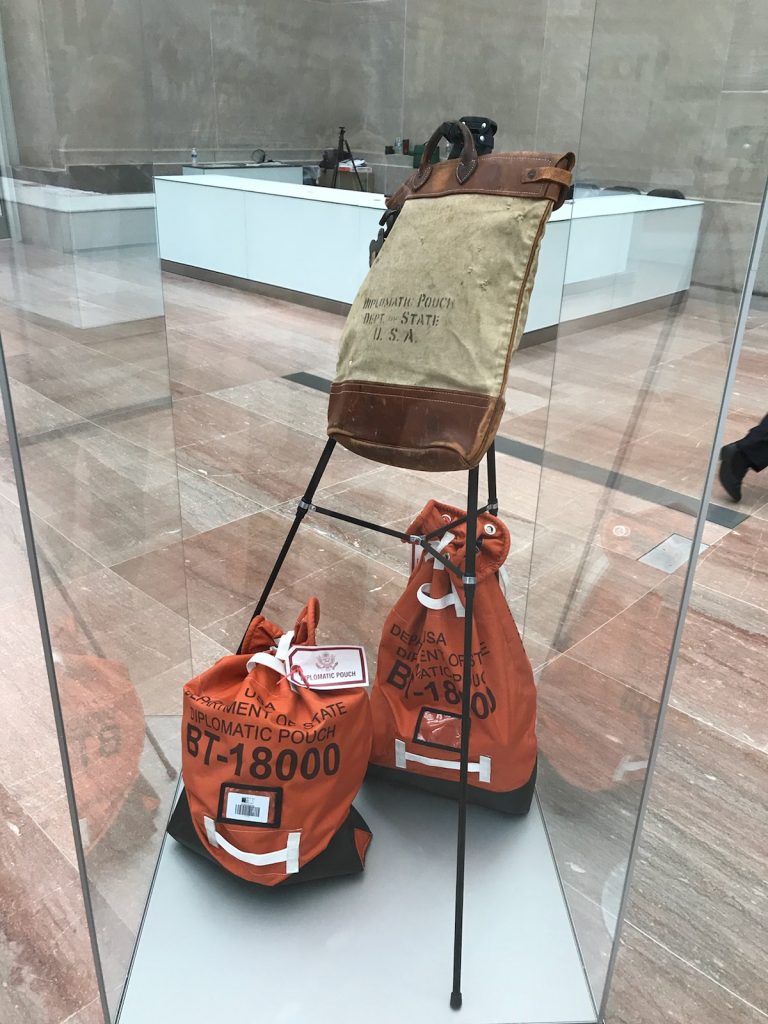Words by Staff
“Intrepid” only begins to describe the unique and adventurous mission of the men and women who would often put themselves in harm’s way around the world serving today in the U.S. State Department’s Diplomatic Courier Service. Whether carrying moon rocks to Canada or classified diplomatic tape communications between President George H.W. Bush and Saddam Hussein on the precipice of war—the State’s “Silver Greyhounds” as they’re affectionately known have been waging a lifelong battle in logistics optimization that has spanned every major geopolitical conflict in every corner of the world since the department’s establishment in World War I.
The history, accomplishments and trials and tribulations of the Diplomatic Courier Service are on full display to the public as the State Department recently opened its exhibit, “100 Years of Diplomatic Couriers—None Swifter than These” now on display through February 3, 2019 at the U.S. Diplomacy Center in Washington D.C.

A Unique Breed and Mission Apart
To describe diplomatic couriers in Hollywood terms would be a mixture of Fedex engineer Chuck Noland (Tom Hanks) in Cast Away meets the travel itinerary of Indiana Jones, traversing the far reaches of the planet—only rather than delivering artifacts—the contents of the couriers’ famous orange pouches were often never known while their mission was to always get it into the right hands. This meant their number one priority was to deliver the package to the right person at the right time at almost any cost. This meant staying with the package even if badly injured in a transportation accident or an animal attack in the Congo. In some cases, lives were at stake, but never forgotten, as the exhibit takes great care to honor those who perished over the Silver Greyhounds’ 100-year history.
World War I Origins
Born out of strategic necessity during the First World War, U.S. Army General John Pershing tasked Major Amos Peaslee with organizing a courier service in 1918 for the military that would carry critical communications from Paris to D.C. In short order, Peaslee and his handpicked couriers streamlined the system, dramatically increasing their efficiency from delivering top-secret communications by shaving off three weeks. The efficacy and importance of the mission transformed from primarily military to diplomatic as the Silver Greyhounds transitioned to manage diplomatic communications with the Department of State the following year. The courier service reorganized with the State’s Bureau of Diplomatic Security in 1985 and continues to be the standard bearer for conveying diplomatic courier services—one orange pouch at a time.

Behind every conflict, new partnership, or diplomatic accord no matter how big or small–the Silver Greyhounds were actively developing new routes, processes and partnerships to get information safely and swiftly to the right people whether in conflict or peace. From World War I and World War II, to Vietnam, the Cold War and the Gulf War, the Silver Greyhounds have been the lifeblood for conveying vital diplomatic messages and packages behind the scenes. In the case of the Cold War, they lived and worked behind the Iron Curtain—coming away with colorful stories to tell.
U.S. Diplomatic Couriers – Into Moscow Video
Read The Process and The Ins and Outs of a Diplomatic Courier Hub
Women Couriers Make an Impact
In 1972, nearly half a century after the courier service first started, the foreign service would see its first woman courier, Susan Shirley Carter. Since then, women couriers have been blazing trails across every populated continent in the execution of the mission. In fact, since Susan Shirley Carter led the way for women couriers, three women have been named Courier of the Year.
Ummi Myelle, 2017 Courier of the Year
Shane Morris Sparks – 2011 Diplomatic Courier of the Year:
Read more about Shane Morris Sparks
Monique Atwood – 2013 Diplomatic Courier of the Year:
Read more about Monique Atwood
Today nearly one-quarter of greyhounds are comprised of female couriers.
A Proud Legacy
The daily work at the State Department has a continuing impact on the world. Few other jobs promise challenges and rewards in such great measure.
But what does the Foreign Service look for when recruiting new Foreign Service officers? The department has put together a list of 13 dimensions or attributes that they look for when determining the fit of an applicant. Check out the 13 Dimensions.
The mission of a U.S. diplomat in the Foreign Service is to promote peace, support prosperity, and protect American citizens while advancing the interests of the U.S. abroad. For information on careers with the United States Department of State, check out their careers page.
“None Swifter Than These: 100 Years of the Diplomatic Courier Service, ” an exhibition highlighting the role of couriers in supporting diplomacy throughout the American century runs through February 3, 2019.

Comments are closed.